
A concert offered by the Courtial Foundation at the Church of St. Ignatius in Rome
Hans Albert Courtial, president of the International Foundation of Sacred Music and Art. He came from Germany to Rome, and never left…
We are looking down upon the statues that encircle St. Peter’s colonnade. To our left we can see the Sant’Uffizio Palace, and, a little beyond, the facade of the Basilica itself. Facing me on the terrace is a 69-year-old German who has devoted much of his life to studying, and helping others to share, the beauty of Rome, the Vatican, and the Church. His name is Hans Albert Courtial, founder and president of two travel agencies, Courtial International and Courtial Travel; but he is much better known for his patronage of religious music and art…
Dr. Courtial, let’s begin at the beginning …
Hans Albert Courtial: I was born in 1946 in Germany, in Dietkirchen (now part of Limburg, in Hesse). I lost my father at the age of four, and my mother, a schoolteacher, was left alone to bring up three children. I must say that in those years our parish priest, Fr. Breithecker, was of tremendous help. I became an altar boy and later a member of the Catholic youth association of the diocese of Limburg.
How was your passion for Rome born?
It’s a great story, and full of surprises… To promote reconciliation between the countries in conflict in the Second World War, the German government first invited several hundred French youth to visit; and the next to visit was a British youth group. It was we, from Catholic Action, who organized it all in 1966. To say thank you, the British ambassador to Germany, Sir Frank Roberts, invited us to his home in Bad Godesberg for a reception.
Among those present were the papal nuncio to Germany, the Archbishop, and Cardinal Corrado Bafile, who said to me: “You, young man, what are you doing here in the middle of all these diplomats?” I told him who I was and why I was there. He said, “I have an idea: why not bring young Germans and young Italians together? Why not organize something in Rome?” Rome… I felt confused; “Rome is far away… who’s got the money!?” …by that time I had already started working for the German railways, but I was giving my whole paycheck to my mother.
But you did manage to find the money….
Yes, because Breithecker immediately said, “Don’t worry, we’re going.”
What was that first trip to Rome like?
I experienced a bit of what had happened to Martin Luther when he reached Rome: the first person I met outside Termini Station was a dazzling “lady of the night.” The pastor charged straight on and I followed… We came to a guest house he had booked near Piazza Cavour, and there we immediately found a letter addressed to us… Inside there were two tickets for meeting the Holy Father Paul VI in person! That same day!
That must have been something for the young Catholic from Dietkirchen!
(Laughs) We rushed to St. Peter’s and then, when we arrived, a Swiss Guard stopped us and told us that Pope Paul VI was already making his way down to the Basilica. But we had two “special tickets,” so he said, “Now be discreet, and enter the Chapel of Michelangelo’s Pieta and wait for the Pope to pass by.”
I can imagine your trepidation …
…I yelled with all the breath I had in my lungs: “Long live the Pope!” So Pope Paul VI looked attentively at us, and he blessed us three times. On reaching the Altar of the Confession, we discovered that it was “surrounded” by a series of armchairs. Our places were among those. I remember that Paul VI came over there, and in the end he embraced me.
I have the impression that Providence was keeping a close eye on you…
Well, later we met Monsignor Pasquale Macchi, and over breakfast we told him our stories. We must have made a good impression on him: he invited us to visit the Apostolic Palace.
I’ll bet he didn’t forget you, once you got back to Germany…
Needless to say, between us a true friendship had been created, one that deepened with the passage of time. Just a few years after I started my business of organizing travel to Rome, I was able to bring a significant sum as a contribution to the opening of the gallery in the Vatican Museum’s collection of modern religious art. I also remember that I gave the Pope several works by Oskar Kokoschka — with whom I had come into contact — that were later included in the collection.
Now let’s return to the young Courtial…
I returned home excited after my first stay in Rome. I felt a burning inside me, like a sacred fire: I sought to tell as many people as possible all about Rome. I wanted them to feel the joy that I had found. But the pastor slowed me down: “First you have to finish your studies, then — when you become someone — you can do it. So for now don’t go crazy!” But I was stubborn. I went to see the bishop of Limburg, the famous Council Father and “social bishop” Wilhelm Kempf.
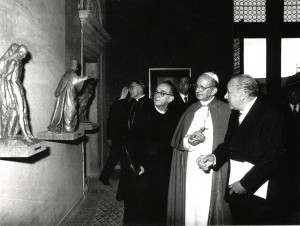
Paul VI, accompanied by Monsignor Pasquale Macchi, admires the works of the sculptor Francesco Messina in the Vatican Gallery dedicated to modern art.
What a conversation, between a critic and an enthusiast of Rome! What happened?
I explained to the bishop how I felt, and asked him to create a space in the diocese for the organization of trips to Rome. He replied with these words, still printed in my mind: “Schuster, bleib bei deinem Leisten,” a German saying advising me to stick to what I knew. But I wasn’t discouraged. I went home and asked: “Mom, have you got 150 marks to give me, so I can start a business?” She answered: “It’s a sacrifice, but yes, you can have them.”
150 marks… and then?
I ran to City Hall and got my license to open a travel agency. I continued working for the German railways, but after a while I asked for a year off, so I could devote all my energies to bringing people to visit the seat of the papacy in Rome, so they could learn to savor its beauty. Progressively, the agency began to attract pilgrims, at first a few dozen, then hundreds. Something happened, though, that proved decisive for the development of the agency…
Again, Providence …
On the way back from Rome once, on the train with the pilgrims, one of them told me: “I am a Protestant, but I feel a great joy in me, because you helped me to really feel the Vatican, the splendor of the Church. What can I do for you?” I said, “I need to advertise, to let people know what I am offering.” He observed: “I think I could handle it; I am president of the advertising sector of German railways…” And so, in stations all over Germany, ads appeared publicizing my agency.
I can imagine the consequences…
Thousands of calls started coming in. I had to leave my railway job. The trips to Rome were so successful that, for the 80th birthday of Paul VI in 1977, I, along with a German Catholic newspaper, was able to collect a million marks for the poor of Rome …
By then the agency had expanded well beyond Limburg…
In 1979 we opened in Rome, then in 1986 in New York. We also began to take care of travel itself, in general, especially to the Holy Land.
At the same time, however, you also developed a love of sacred music; where did that come from?
As a boy I sang as a tenor in the choir of St. Cecilia in Dietkirchen. The first choir I brought to Rome was my own parish choir. The singers visited St. Peter’s and sang at St. Ignatius Church, and they went back in Germany imbued with the sacred fire that I had felt. I invited all the choirs to Germany to come to Rome.
They would sing in the Baroque Basilica of St. Ignatius, but often also at St. Peter’s. Why?
I contacted the then-prefect of music at St. Peter’s, Monsignor Pietro Altabella, to ask if I could bring different choirs to the Basilica to sing at the 10:30 a.m. Mass. Monsignor Altabella agreed, and so began a fine tradition. I was able to bring hundreds of choirs from all over the world to sing at St. Peter’s in the past decades.
There were also exceptionally important moments of sacred music…
In 1985, with John Paul II celebrating, Herbert von Karajan conducted Mozart’s Krönungsmesse, directing the Vienna Phiharmonic Orchestra. In 1991, for the bicentenary of the death of the Austrian composer, the Chapel Choir of the Cathedral of Salzburg executed the Requiem. Some 20,000 people came.
These were important moments in St. Peter’s, but St. Stephen’s Cathedral in Vienna also saw great events…
In that same year, the Cardinal Archbishop of Vienna asked me to organize Mozart’s commemorative Mass, musically centered on his Requiem, with the Vienna Philharmonic, conducted this time by Georg Solti. For the occasion, he also played the famous Pummerin, a bell created by the melting together of 100 cannon balls fired by the Turks during the famous siege of 1683. That evening, 1,950 people from all over the world were present: the amount raised, about 1 million marks, was used to purchase a new organ for St. Stephen’s.
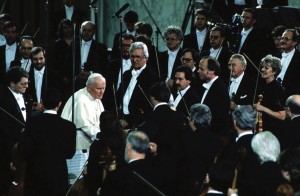
John Paul II meets musicians on the Day of Artists during the Jubilee of the Year 2000.
A few years later you founded, in Rome, the “International Association of Friends of Sacred Music”…
Everything started to develop beyond belief. In 1996, I founded what is known today as the “International Association of Friends of the Foundation for Sacred Music and Art,” to strengthen the Roman “base.”
A very important role in this was played by Princess Elvina Pallavicini.
In 2000, for the Holy Year, the Vienna Philharmonic came and performed, once again, Mozart’s Krönungsmesse.
It was then decided that we would take things one step further: we would constitute (in 2002) the “Foundation for Sacred Music and Art,” a non-profit organization that immediately organized the first “International Festival of Sacred Music and Art” in the great basilicas of Rome, with the participation of the Vienna Philharmonic.
This is an event that has since been successfully repeated every year, and the Vienna Philharmonic never misses it.
Among the Foundation’s activities there are also ecumenical music projects…
In recent years we have supported, for example, the “Sistina” Pontifical Musical Choir, in its musical encounters with the Anglican choir of Westminster Abbey, the “Thomaner Choir” of Leipzig (Reformed) and that of the Orthodox Patriarchate of Moscow. We do it with conviction, certain that singing together can be a common element in view of the unity for which we so long.
It is very important for the Foundation to support the restoration of ecclesiastical art…
Even before the establishment of the Foundation, we funded, for example, at St. John Lateran, the restoration of the famous “Luca Blasi” organ and the Altar of the Most Holy Sacrament; both works were blessed by St. John Paul II. Then, with the Foundation we financed 30 projects, in part related to the preservation and restoration of parts of the Roman papal basilicas and other Vatican areas.
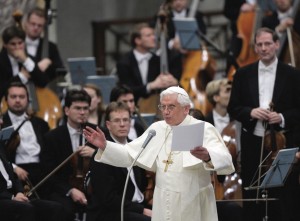
Pope Benedict XVI with the Stuttgart Orchestra on the occasion of his 80th birthday in 2007.
And outside the Vatican?
We partially restored the organ of the “Oratory of Caravita” and that of the Basilica of St. Ignatius of Loyola. Another was that of the Chapel of the Holy Shrine in the German house of Loreto (2003-2004). We also contributed to the creation of the mosaic panel depicting the Madonna Salus Populi Romani in the sanctuary of St. John Paul II in Krakow.
In your 45 years here, you have seen several Popes. Could you give us some impressions, derived perhaps from personal experience?
I have already told you about Paul VI, but I repeat: I have always had great reverence for him: in my opinion he was an extraordinary Pope.
What about John Paul II?
Pope Wojtyla’s time was wonderful. In 1980 he traveled to Fulda during his apostolic visit to Germany, and blessed a five-ton bell, donated by me and a group of pilgrims to the ancient Basilica of St. Lubentius in my hometown of Dietkirchen.
I must also say that it was a unique form of suffering for me to note over the years his physical weakening. John Paul II gave us all a great lesson in the value of suffering.
Then came Benedict XVI, a great lover and connoisseur of sacred music…
When he was still a cardinal, he often attended our concerts. In 2010 the Foundation honored his brother Georg: in front of the Pope, we also presented his composition Mass for the Holy Year. I was very impressed by Pope Benedict’s homilies, which were so analytical and clear, and also by his humility.
In your opinion, does Pope Francis love sacred music?
He certainly does. And I have proof. Just think, we helped to organize the execution of Mozart’s famous “Et incarnatus est” for the Christmas Eve Mass at St. Peter’s. As far as I know, it was the Pope himself who wanted this particular song.
And there’s more: he gave the master of the Sistine Chapel, Monsignor Palombella, the edition that he wanted, asking for an interpretation of it that had been made in 1988.
Can you sum up 45 years of life in Rome?
Two statistics. We have brought about 1.9 million pilgrims to Rome, and contributed more than 20 million Euros to protect and revive Christian art.
Have you ever regretted, even for a few days, having come to Rome from Dietkirchen?
Never. Every morning when I get here to St. Peter’s Square, I thank the Lord that I am in Rome. I note — and I say this with great regret — an enormous deterioration in the quality of city life. But to be sure, one stable constant remains: my love for the Pope and the Church remain unmoved!

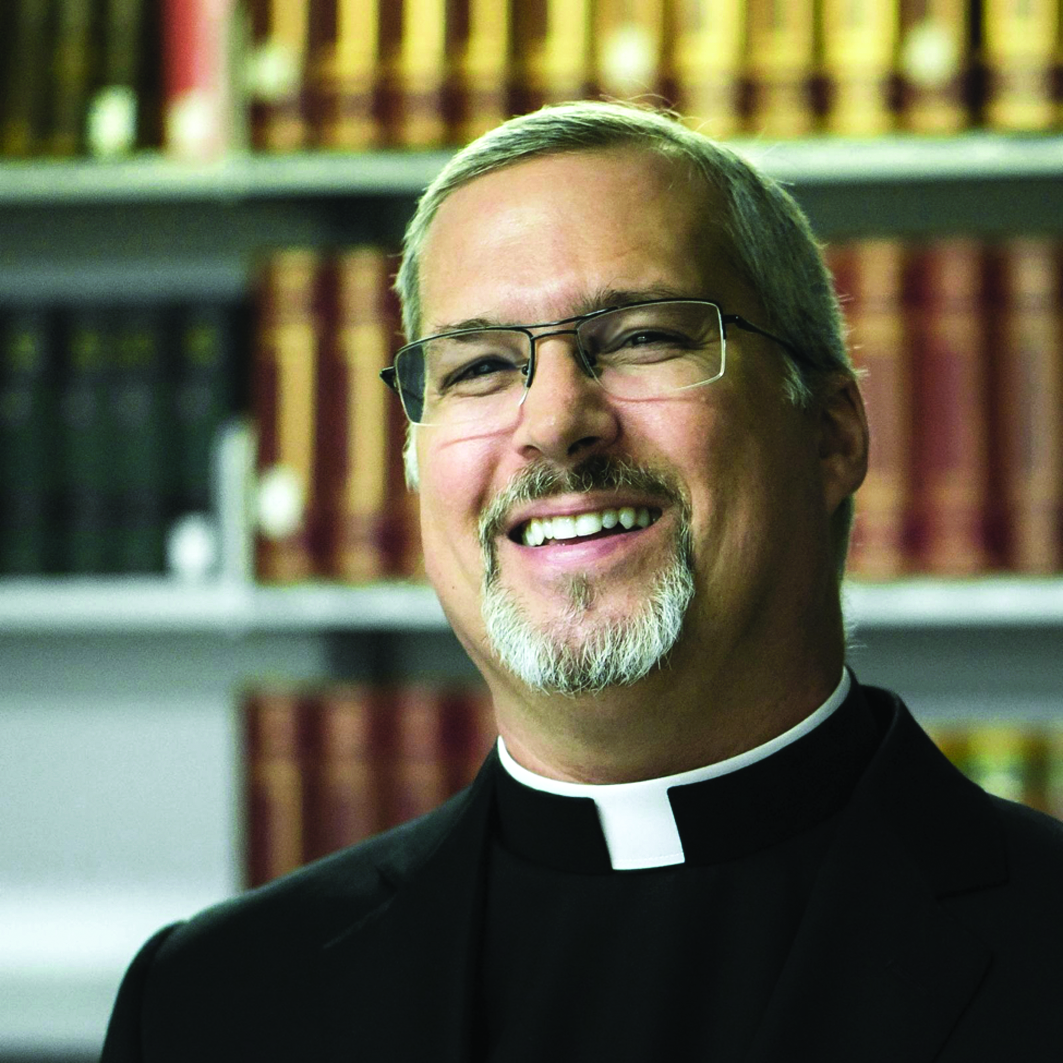
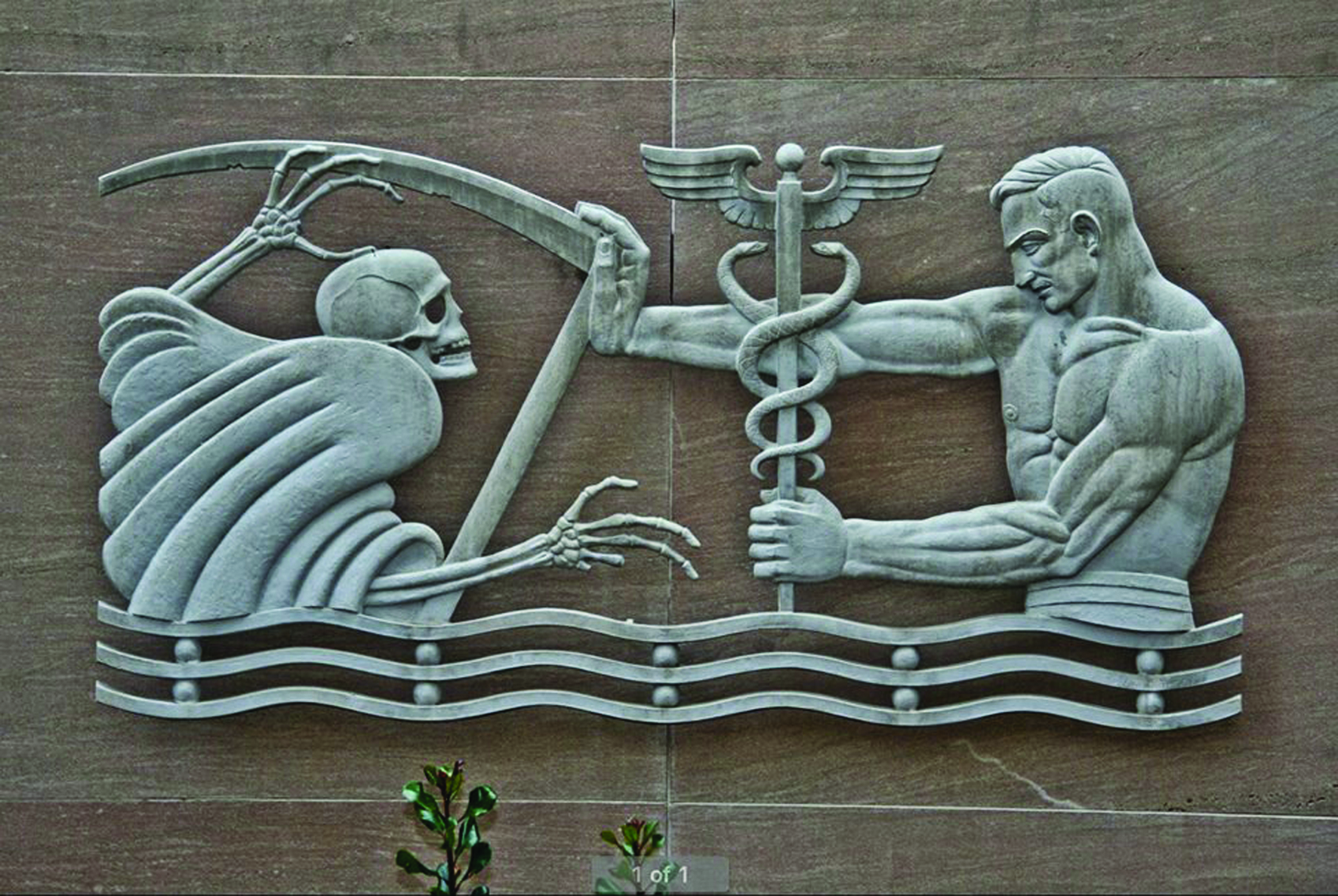



Facebook Comments